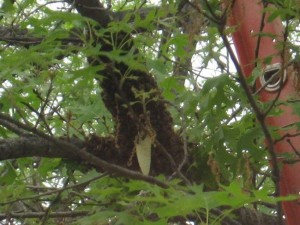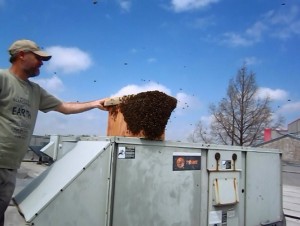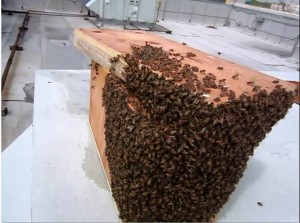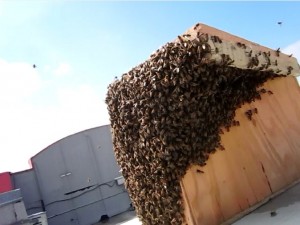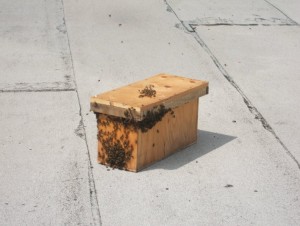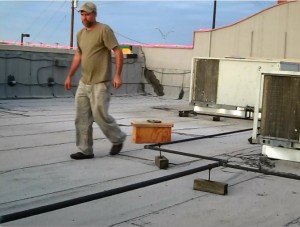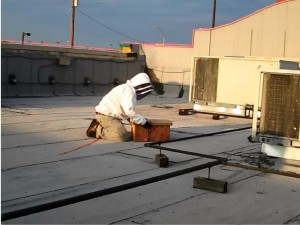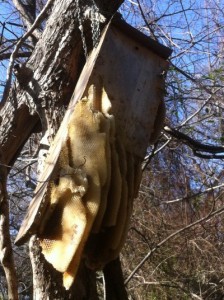This last 2 weeks (March 30-April 9 2013) have been “swarm week”. I’ve received no less than 20 calls per day for swarm pickups in people yards, trees, houses, squirrel habitats, school yards, and more…
I even caught a swarm that was just innocently crossing the road while I was between calls!
Removal – Monday morning. These bees had taken up residence in a playhouse. The ceiling (roof) of the play house had been boarded over to protect the kids’ heads from any stray nails holding the shingles – but there were some pretty significant cracks – allowing the perfect space for a swarm of bees to take up residence, and call the place home. Once a swarm starts drawing comb and takes up residence in a cavity – it’s no longer a swarm – but a colony. These take MUCH more time to remove than a simple swarm.
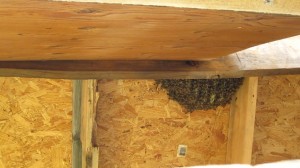

After removing these bees – my next call was for a swarm pick up. This was a fairly easy and simple pick up, I took my last swarm-trap box that I had available to capture this one. The queen was an easy catch! The bees had swarmed from the tree in the background. The mother-hive is still very active at the base of the tree. The homeowners will be removing the tree later in the year – as it has died. I’ll be called back to remove the mother hive when the time is right.
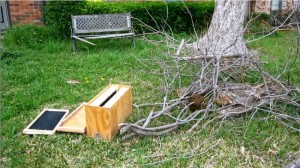
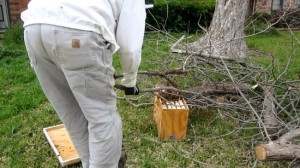
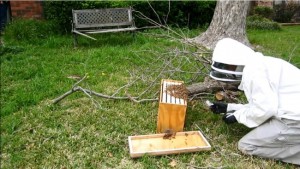
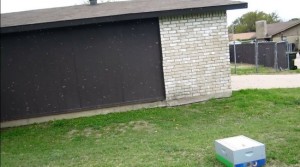
My next call was for a swarm that had just moved into a yard that morning. Within 2 miles of the first swarm for the day. On my way to swarm #2 – I encountered ANOTHER swarm crossing the road. (Why did the bees cross the road?). I stopped, and applied a few drops of lemongrass oil to a frame in my hand-built Bee-Vac collection box. Sure enough – the bees smelled the LGO and collected. Once again – this queen was an easy find and catch.
Swarm #2 becomes Swarm #3… The last stop for the day was to pick up the bees from the squirrel habitat. I unscrewed the box from the cage, and stapled screen to cover the opening of the habitat box. Easy! Those ladies got to ride shotgun with me in the car!
Then – yesterday – the bees from the removal decided that they didn’t like the box that I had placed them in to. They swarmed in front of me while I was assembling more frames. It was a disheartening sight. Every last bee left the box in a mass-exodus. Luckily for me – they gathered within about 10 minutes in a nearby tree – and I was able to re-collect them and put them into another box – with a queen excluder under the box – so that the queen cannot leave the premises.


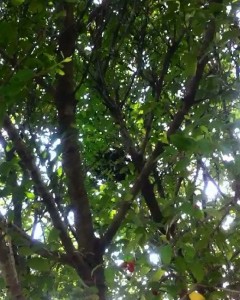
Next… Caldwell Elementary school had what was thought to be a swarm of bees in a tree at the exit to the school. I arrived in time to collect the bees before school dismissed for the day. This collection wound up turning into a removal – as it was revealed after removing some of the bees that they had already started drawing comb. The bees were still well-behaved, though – and are currently with the other swarm catches – in quarantine while their demeanor can be ascertained.
I’ll be building more boxes this evening – as I have 3-4 more removals and captures to complete.




